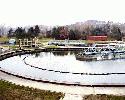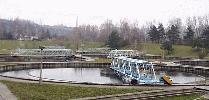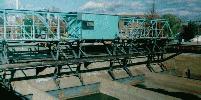 "Flow - Chart of a Wastewater Treatment Plant - 1"...
"Flow - Chart of a Wastewater Treatment Plant - 1"...
 "Flow - Chart of a Wastewater Treatment Plant - 1"...
"Flow - Chart of a Wastewater Treatment Plant - 1"...
 "Flow - Chart of a Wastewater Treatment Plant - 2"...
"Flow - Chart of a Wastewater Treatment Plant - 2"...
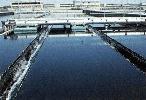
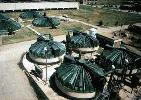
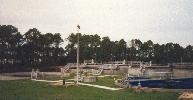
| Technology | Treatment goal | Detention time (day) | Depth (feet) | Organic loading (lb / ac . day) |
| Oxidation pond | Secondary | 10 - 40 | 3 - 4.5 | 36 - 110 |
| Facultative pond | Secondary | 25 - 180 | 4.5 - 7.5 | 20 - 60 |
| Aerated pond | Secondary, polishing | 7 - 20 | 6 - 18 | 45 - 180 |
| Storage pond, HCR pond | Secondary, storage, polishing | 100 - 200 | 9 - 15 | 20 - 60 |
| Root zone treatment, Hyacinth pond | Secondary | 30 - 50 | < 4.5 | < 45 |
| Design factor | Surface water flow | Subsurface water flow |
| Minimum surface area | 23 - 115 ac / mgd | 2.3 - 46 ac / mgd |
| Maximum water depth | Relatively shallow | Water level below ground surface |
| Bed depth | Not applicable | 12 - 30 in |
| Minimum hydraulic residence time | 7 days | 7 days |
| Maximum hydraulic loading rate | 0.2 - 1.0 gpd / ft2 | 0.5 - 10 gpd / ft2 |
| Minimum pretreatment | Primary (secondary optional) | Primary |
| Range of organic loading as BOD | 9 - 18 lb / ac . d | 1.8 - 140 lb / ac . d |
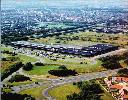
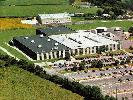
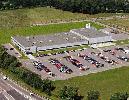
| Feature | Slow rate | Rapid infiltration | Subsurface infiltration | Overland flow |
| Soil texture | Sandy loam to clay loam | Sand and sandy loam | Sand to clayey loam | Silty loam and clayey loam |
| Depth to groundwater | 3 ft | 3 ft | 3 ft | Not critical |
| Vegetation | Required | Optional | Not applicable | Required |
| Climatic restrictions | Growing season | None | None | Growing season |
| Slope | < 20 %, cultivated land < 40 %, uncultivated land |
Not critical | Not applicable | 2 % - 8 % finished slopes |
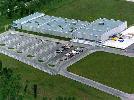
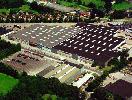
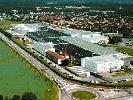
| Process | Oxygen supply | Reactor volume | Retention time | Removal efficiency |
| Activated sludge | Pressurized air | 10 m3 | 4 - 6 hr | 90 % - 95 % organic matter 90 % - 95 % suspended solids |
| Biologic rotary discs | Air | 1 m3 | 1 - 3 hr | 90 % - 95 % organic matter |
| Ascendant flow | Anaerobic | 2 m3 | 24 hr | 50 % - 60 % organic matter 57 % suspended solids |
| Anaerobic filtration | Anaerobic | 2 m3 | 36 hr | 40 % - 50 % organic matter 52 % suspended solids |
| Septic tank | Anaerobic | 2 m3 | 36 hr | 25 % organic matter |
| Hydroponic cultivation | Aerobic / anaerobic | 6 m3 | 12 hr | 65 % - 75 % organic matter |
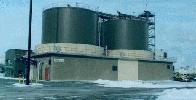
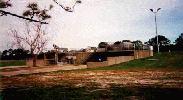
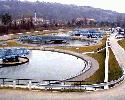
| Treatment type | Advantages | Disadvantages |
| Stabilization lagoons | Low capital cost, low operation and maintenance costs, low technical manpower requirement | Requires a large area of land, may produce undesirable odors |
| Aerated lagoons | Requires relatively little land area, produces few undesirable odors | Requires mechanical devices to aerate the basins, produces effluents with a high suspended solids concentration |
| Septic tanks | Can be used by individual households, easy to operate and maintain, can be built in rural areas | Provides a low treatment efficiency, must be pumped occasionally, requires a landfill for periodic disposal of sludge and septage |
| Constructed wetlands | Removes up to 70 % of solids and bacteria, minimal capital cost, low operation and maintenance requirements and costs | Remains largely experimental, requires periodic removal of excess plant material, best used in areas where suitable native plants are available |
| Filtration systems | Minimal land requirements, can be used for household-scale treatment, relatively low cost, easy to operate | Requires mechanical devices |
| Vertical biological reactors | Highly efficient treatment method, requires little land area, applicable to small communities for local-scale treatment and to big cities for regional-scale treatment | High cost, complex technology, requires technically skilled manpower for operation and maintenance, needs spare-parts-availability, has a high energy requirement |
| Activated sludge | Highly efficient treatment method, requires little land area, applicable to small communities for local-scale treatment and to big cities for regional-scale treatment | High cost, requires sludge disposal area (sludge is usually land-spread), requires technically skilled manpower for operation and maintenance |
